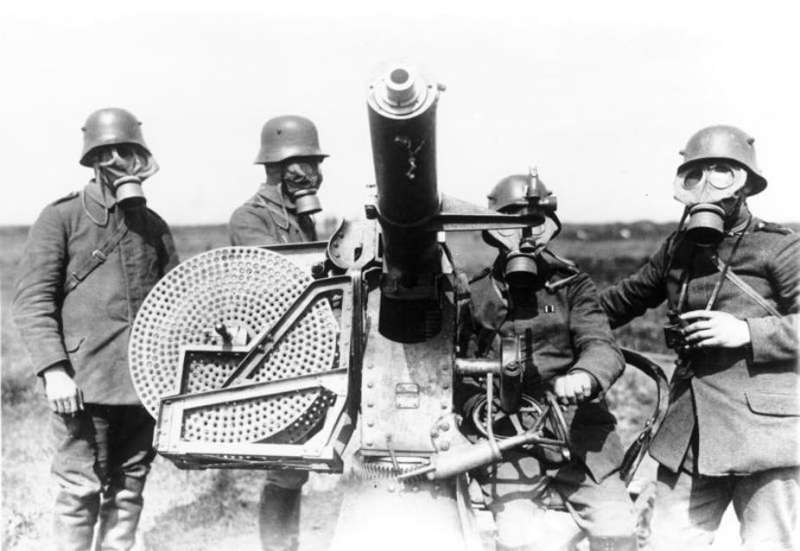How chemical weapons became taboo – and why they still are

The world has witnessed two very different chemical weapons attacks in the last two months: in March, the assassination attempt against Sergei Skripal in the British town of Salisbury, and then the Assad regime's latest chemical strike in Syria. The weapons used in both cases are prohibited under international law, and their use indicates the breaking of a "taboo" which has provoked a swift and forceful response from the international community.
But why is this taboo still so powerful? After all, the Skripal poisoning was an assassination attempt, not a mass casualty attack, and fatalities in chemical attacks make up only a small proportion of the towering death toll in Syria's calamitous eight-year-old civil war. Why does the use of chemical weapons provoke such a profound international reaction – and when did these weapons become "special"?
Chemicals have been used in various forms for centuries. They are not just deadly, but often invisible; they stand out due to the means in which they cause harm, the sheer scale on which they can be used, and their potential to cause long-term destruction and suffering.
Along with biological and nuclear weapons, chemical weapons have been labelled weapons of mass destruction (WMD) since 1946. The three types of WMD are perceived as a single distinct category of weapons by virtue of their ability to create lasting and indiscriminate harm. Labelling them as distinctively appalling has proved an effective device to galvanise international action to prevent their future use and proliferation.
But if this principle has held true for WMD in general, it was a new, modern opprobrium attached to chemical weapons that paved the way for the powerful stigma now attached to other weapons. Chemical warfare first began to attract a special moral condemnation during World War I, when the world saw the horrendous effects of battlefield gas attacks. Immediately, chemical warfare was singled out as something new and different that demanded action.
Between the two wars, scientific research identified that chemical and bacteriological weapons had the potential to cause irreversible destruction on a scale not previously seen. At the time, mass-casualty bacteriological weapons (later termed biological weapons) remained largely hypothetical, but the potential use of pathogens as weapons was nonetheless deeply feared.
Both chemical and biological weapons can be used to target populations beyond the battlefield, thus highlighting their indiscriminate nature. Governments feared that technological innovation could lead to even more deadly methods of warfare. They were prohibited in 1925 by the Geneva Protocol, specifically the "Protocol for the Prohibition of the Use in War of Asphyxiating, Poisonous or Other Gases, and of Bacteriological Methods of Warfare".
Never again?
When nuclear weapons arrived on the world stage with the attacks on Hiroshima and Nagasaki in 1945, their horrendous effects were publicised around the world. Suddenly, millions of people were living in fear of mass casualty weapons.
Throughout the cold war years, the fear that nuclear war might lead to the end of humankind provoked international action to prevent their further development and use. But even though the nuclear threat was the dominant theme of the cold war, chemical and biological weapons never lost their stigma; it seems the fear of nuclear weapons in fact reinforced the fear of chemical and biological weapons.
In the 1980s, it became clear that the international proscription of chemical weapons had not succeeded. The world was subjected to nightmarish images from the 1980-88 Iran-Iraq War of people suffering from the effects of mustard gas, sarin and tabun. When Iraq used gas to massacre thousands of civilians at Halabja in 1988, the ensuing horror and moral outrage spurred the creation of the 1992 Convention on the Development, Production, Stockpiling and Use of Chemical Weapons. And once again, the norm that all WMD are different from other weapons was reinforced.
This is the history behind the international reaction towards the chemical attacks of recent months and years. Since the first gas attacks in Europe during World War I, every use of chemical weapons has immediately met with outrage – but it's also tested the durability of the stigma these weapons bear. Of the three weapons categorised as WMD, chemical weapons are the most accessible. Should attacks become normalised as just another feature of warfare, there is the possibility that the stigma keeping their use in check will start to fade.
And should technological innovation produce some new category of weapon with the potential to create destruction over and above that of existing WMD, then perhaps the chemical warfare stigma will be eclipsed. But for the time being, the WMD we've come to fear remain in a class of their own – and that's where they belong.
Provided by The Conversation
This article was originally published on The Conversation. Read the original article.![]()



















